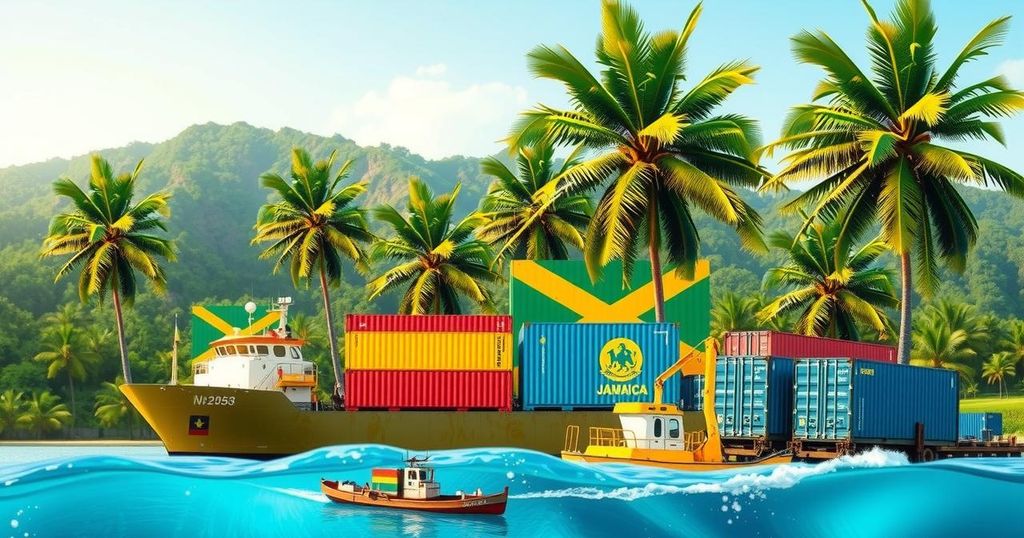US Tariffs on Aluminum: Implications for Jamaica’s Trade Opportunities

The U.S. 25% aluminum tariff, aimed at boosting domestic smelting, is likely to hurt aluminum-consuming industries and raise consumer costs. Jamaica may benefit as a key alumina supplier amidst shifts in trade dynamics. Challenges include high energy costs and the future of the Alpart refinery, necessitating strategic government intervention for Jamaica to capitalize on these developments.
The U.S. government’s implementation of a 25% tariff on imported aluminum seeks to stimulate the domestic aluminum smelting industry. However, this move is contentious, as many economists believe it could adversely affect aluminum-using sectors, elevate costs for consumers, and instigate countermeasures from trading partners. Notably, Jamaica, as a significant alumina supplier, might find new market opportunities amid these trade shifts.
Aluminum production is intensive and U.S. smelters face a competitive disadvantage due to high energy costs. Energy constitutes 30-40% of production expenses, making them uncompetitive against countries with cheaper electricity, such as Canada or China. Current costs of alumina, labor, and carbon anodes further complicate the revival of U.S. smelting, which heavily relies on imported alumina – primarily from Jamaica.
The decline of U.S. aluminum production is evident, with output dropping from 5 million metric tons to less than 1 million metric tons in recent years. The tariff may marginally revive a couple of smelters, but it won’t significantly alter the reality of the industry. Century Aluminum, partially owned by Glencore, is slated to benefit from a $500 million grant under the Inflation Reduction Act to develop a new smelter, though this will take years to realize.
The ramifications of such tariffs will mainly affect the aluminum-consuming industries, which significantly contribute to the U.S. economy. Sectors like automotive, aerospace, and construction could see input costs increase, potentially leading to higher consumer prices. Outsourcing production might also become a strategy some companies consider due to escalated costs.
The rationale behind imposing these tariffs includes correcting trade imbalances, rebuilding U.S. industrial capacity, and enhancing national security. While an expected $4 billion in revenue from tariffs seems promising, it overlooks potential losses in other industries.
Despite potential downsides, Jamaica could benefit from the tariffs, as the U.S. requires alumina despite its smelting decline. With a long-standing trade relationship with the U.S., Jamaica has active refineries that can supply alumina. However, the future of its Alpart refinery, owned by China’s JISCo, is uncertain due to geopolitical tensions.
Upgrading the Alpart facility to improve energy efficiency is essential for Jamaica’s competitiveness. Historical actions, like those by former Prime Minister Edward Seaga in the late 1980s to revitalize the Jamalco refinery, highlight the need for decisive government intervention in Alpart’s future.
The tariffs may pose challenges for U.S. smelters but could create opportunities for a few protective companies and the government. For Jamaica, however, an appropriate policy response could enhance its strategic position in the alumina market and allow it to benefit from the U.S.’s trade policy failures.
In summary, the U.S. tariffs on aluminum are a complex economic maneuver that may not revive domestic smelting significantly but could reshape global trade dynamics favoring alumina-exporting nations like Jamaica. While U.S. industries may face rising costs and potential outsourcing, Jamaica stands at a pivotal point to strengthen its alumina market presence, contingent on strategic policymaking and investment.
Original Source: jamaica-gleaner.com




